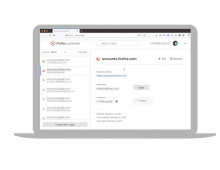
Firefox to Limit Notification Prompts While Browsing
Mozilla is trying to educe the amount of annoying permission prompts for receiving desktop notifications that Firefox users are seeing on a daily basis.
The organization decided to require user interaction on all notification permission prompts, starting in Firefox 72. That is, before a site can ask for notification permission, the user will have to perform a tap, click, or press a key.
A study performed by Mozilla showed that notification prompts are very unpopular. On Release, about 99% of notification prompts go unaccepted, with 48% being actively denied by the user, Mozilla found. To add from related telemetry data, during a single month of the Firefox 63 Release, a total of 1.45 Billion prompts were shown to users, of which only 23.66 Million were accepted. I.e, for each prompt that is accepted, sixty are denied or ignored. In about 500 Million cases during that month, users actually spent the time to click on “Not Now”.
Users are unlikely to accept a prompt when it is shown more than once for the same site, Mozilla says.
Based on the outlined results Mozilla has decided to enact two new restrictions:
- Starting from Firefox 70, replace the default “Not Now” option with “Never”, which will effectively hide the prompt on a page forever.
- Starting from Firefox 72, require user interaction to show notification permission prompts. Prompts without interaction will only show a small icon in the url bar.
When a permission prompt is denied by Firefox, the user still has the ability to override this automatic decision by clicking the small permission icon that appears in the address bar. This lets users use the feature on websites with that prompt without waiting for user interaction.
Besides the improvements in user interaction rates that Mozilla's study has shown, these restrictions were derived from a few other considerations:
- Easy to upgrade. Requiring user interaction allows for an easy upgrade path for affected websites, while hiding annoying “on load” prompts.
- Transparent. Unlike other heuristics (such as “did the user visit this site a lot in the past”), interaction is easy to understand for both developers and users.
- Encourages pre-prompting. Mozilla wants websites to use in-content controls to enable notifications, as long as they have an informative style and do not try to mimic native browser UI. Faking (“spoofing”) browser UI is considered a security risk and will be met with stronger enforcement in the future. A good pre-prompt follows the style of the page and adds additional context to the request. Pre-prompting, when done well, will increase the chance of users opting to receive notifications.





















